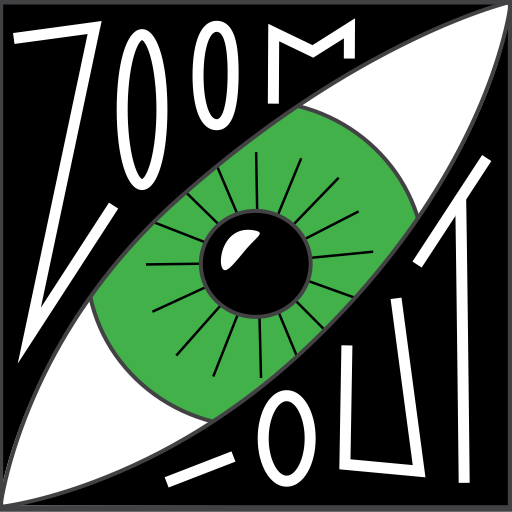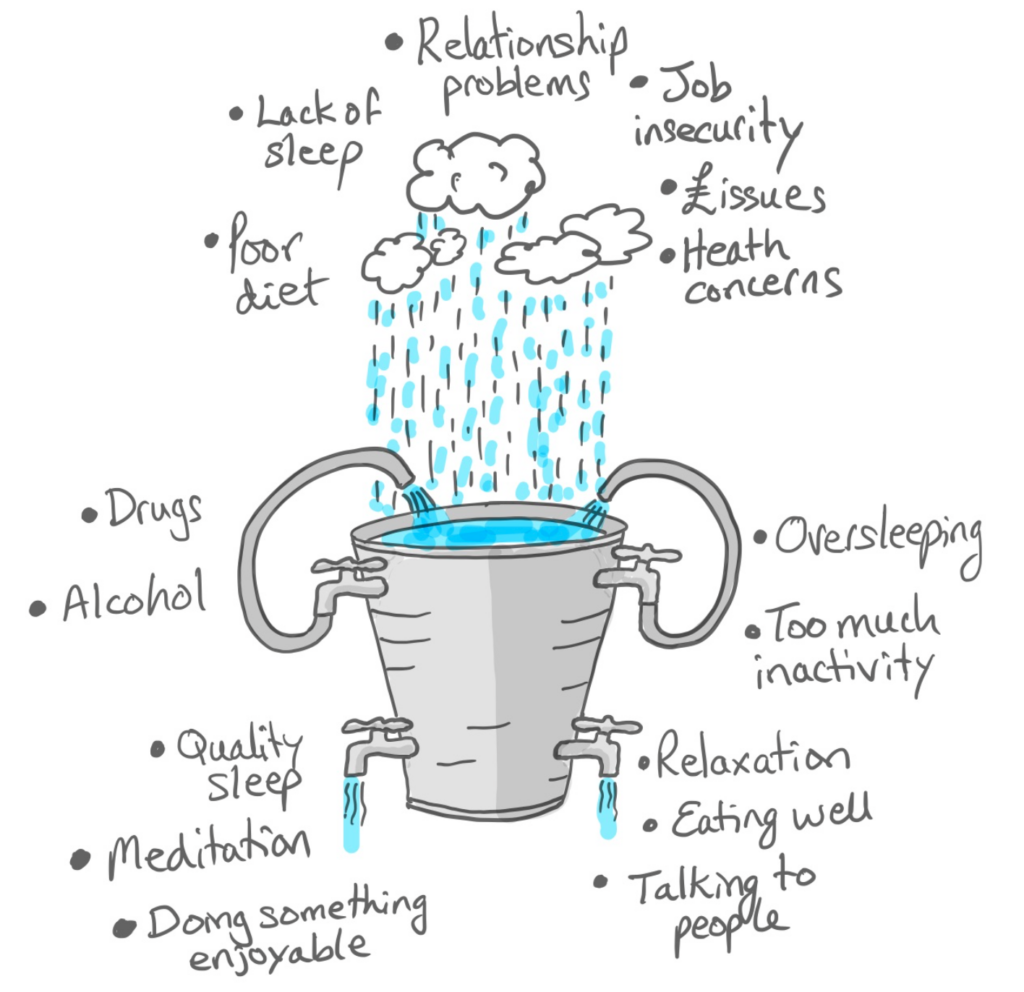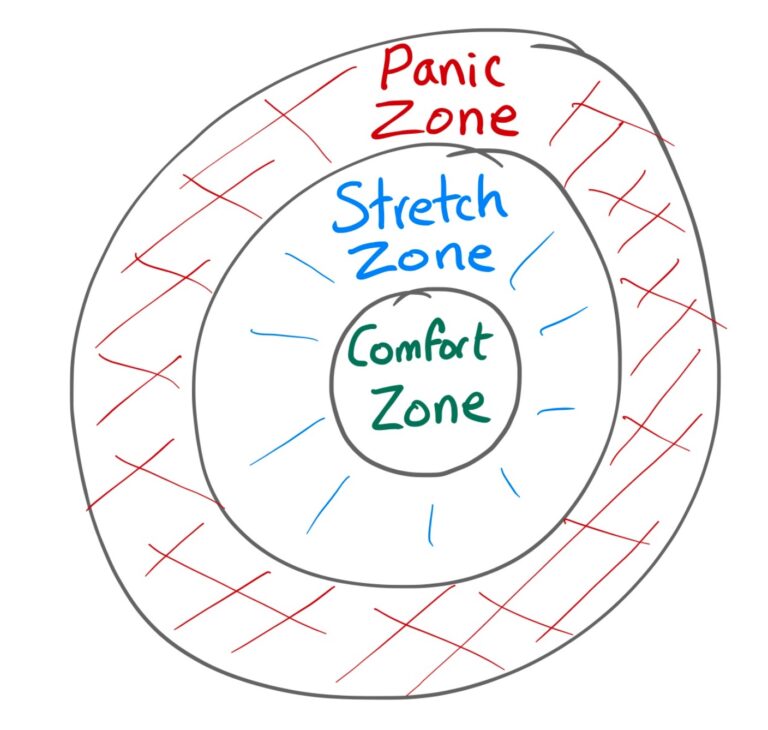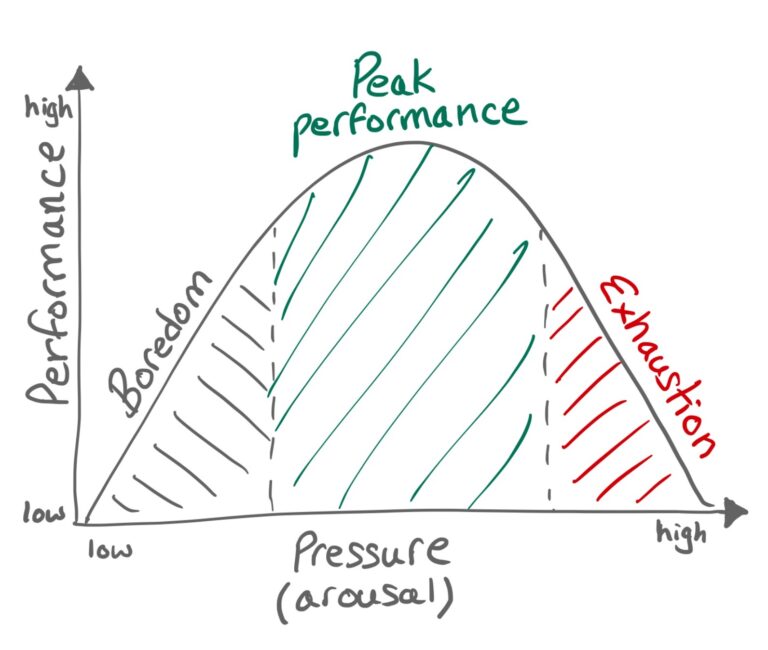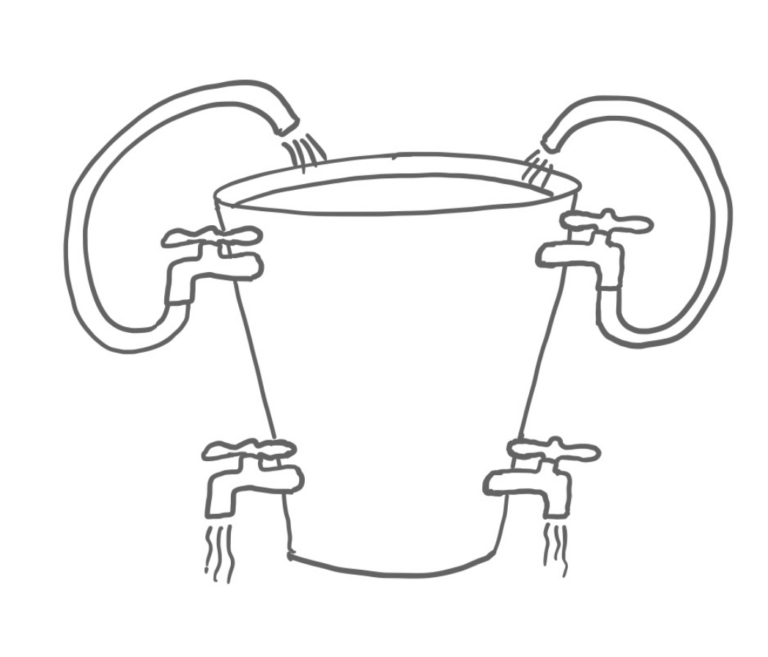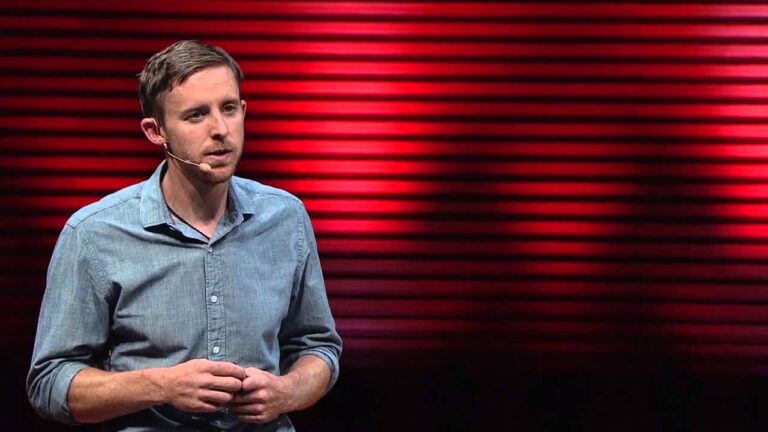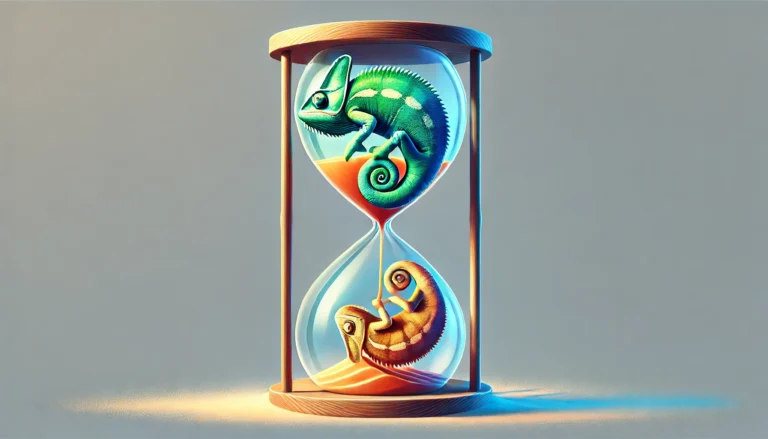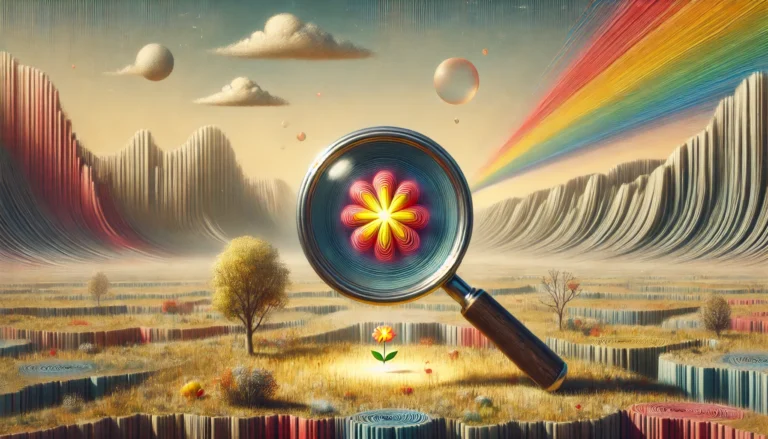
Tag: stress
-
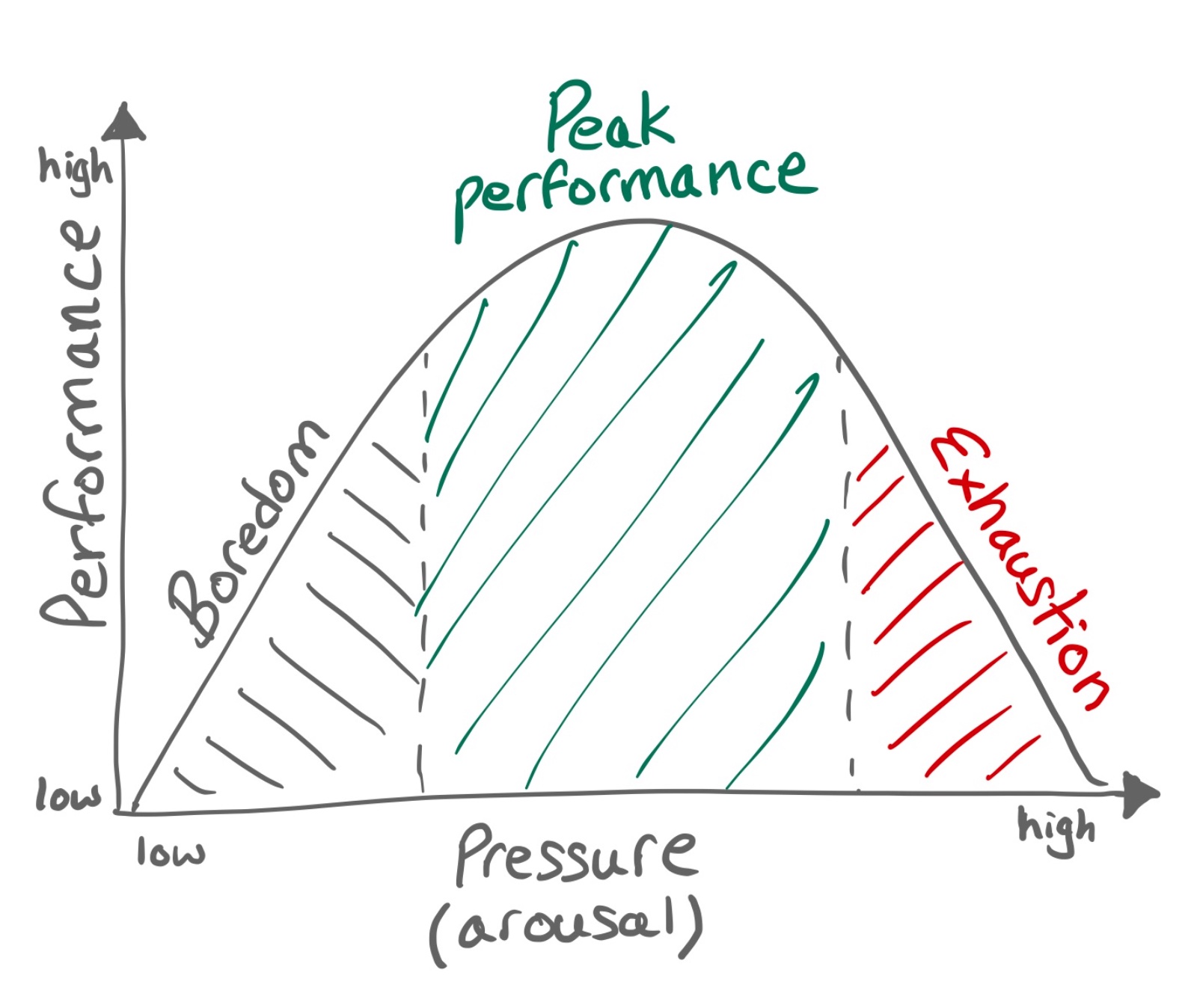
“Inverted U” Zoom-Out

Seeing the relationship between pressure and performance.
The Yerkes-Dodson Law of Arousal and Performance

Screenshot -
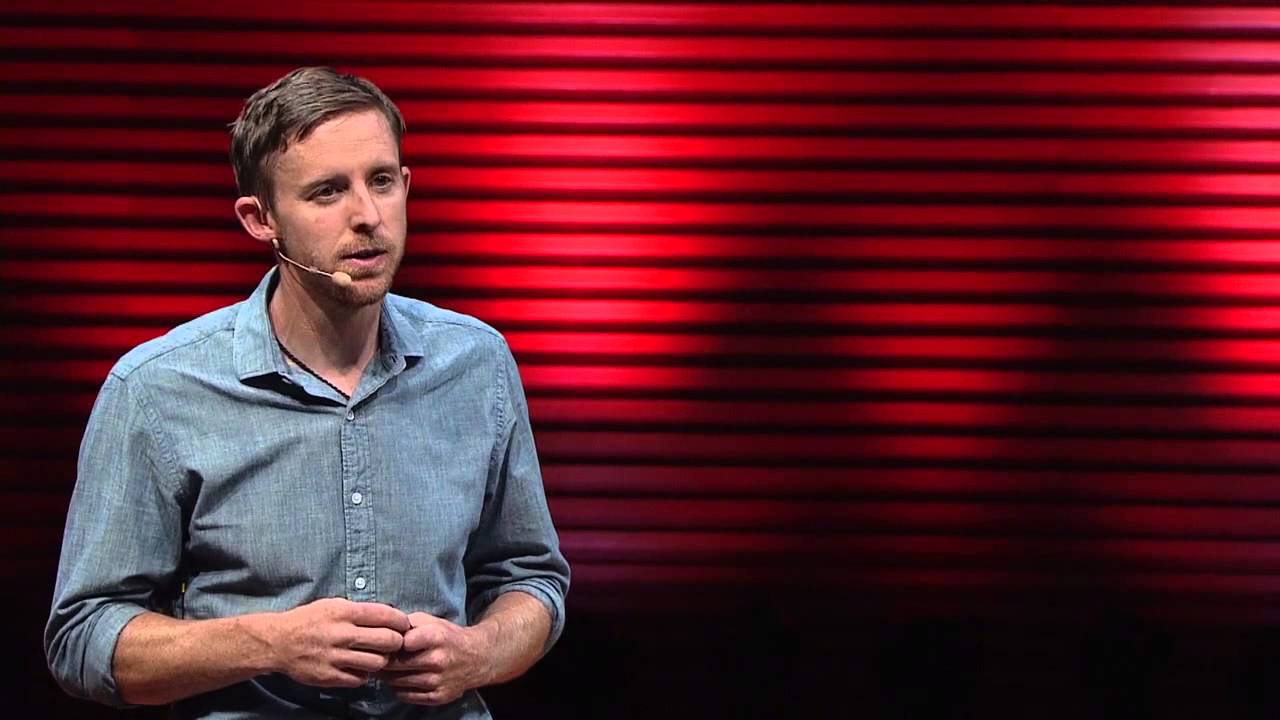
“Adversity Adventure” Zoom-Out

Seeing adversity as a potential adventure.
Let’s face it, life can be pretty hard.
Everyone experiences adversity in their lives. Wealth and privilege are no guarantees against it.
A common theme of zoom-out is that when faced with things we cannot control we should keep in mind that we can still control our perspectives and attitude.
“Hardship is inevitable, so put your goggles on and face into the wind”
– Tommy Caldwell, professional climberFor me, “goggles” here in the context of zooming-out has a double meaning. As well as meaning prepare yourself and face into adversity, it can be interpreted as intentionally selecting the lenses through which you will view adversity in our mind’s eye.
Tommy Caldwell also provides a beautiful set of “goggles” to wear if we choose:
“Reframe adversity as adventure”
– Tommy Caldwell, professional climberThe full quote is:
“I think the greatest gift that my dad gave me, is that he reframed adversity as adventure and taught me to be bold. He showed me that if we allow ourselves to be exposed to challenge, then that challenge can energise us and show us who we are. And even if we don’t open ourselves up, conflict is gonna find us. It’s the rare pathetically privileged person that doesn’t get their fair share of hardship. So we should make an effort to be prepared.”
– Tommy Caldwell, professional climber speaking about his fatherHere’s Tommy’s Ted Talk – the elevant part here is 8 mins 11 seconds into the video:
I highly recommend watching the “Dawn Wall” movie, regardless of your view on rock climbing. It’s a fascinating and inspirational story of a person achieving what was believed to be impossible despite the odds being stacked against him. A true “adversity adventure”.
-

Lazarus’ transactional model of stress
In 1976 Richard Lazarus developed what was to become a highly influential model of stress. In his transactional model, cognitive appraisal is the key to understanding stress. Cognitive relates to thinking and appraisal means making a judgement when evaluating a potential stressor.
A person perceives a situation and gives meaning to it. Stress arises when a person perceives that a situation places a strain on them which is greater than their resources.

More generally, the Zoom-Out mindset correlates strongly with our cognitive reappraisal skills.
Our ability to step back from a default perspective and find the most helpful perspective is another way of expressing cognitive reappraisal as encoded in some of the Zoom-Out signposts and motto:
“All Perspectives are wrong but some are helpful”
– Zoom-Out Signpost“Default perspectives can be overridden”
– Zoom-Out Signpost“Zoom-Out to find the most helpful perspective”
– Zoom-Out Motto
You will find that some of the individual Zoom-Outs can help with “coping” with stress in the model as follows:- Some Zoom-Outs are “emotion-focused” and help “change the relation to the situation”
- Some Zoom-Outs are “problem-focused” and help “change the situation itself”
- Some Zoom-Outs are both “emotion-focused” and “problem-focused”
-
“Evolutionary Distortions” Zoom-Out
Drafting…
Evolution did not design our minds to see clearly…
-
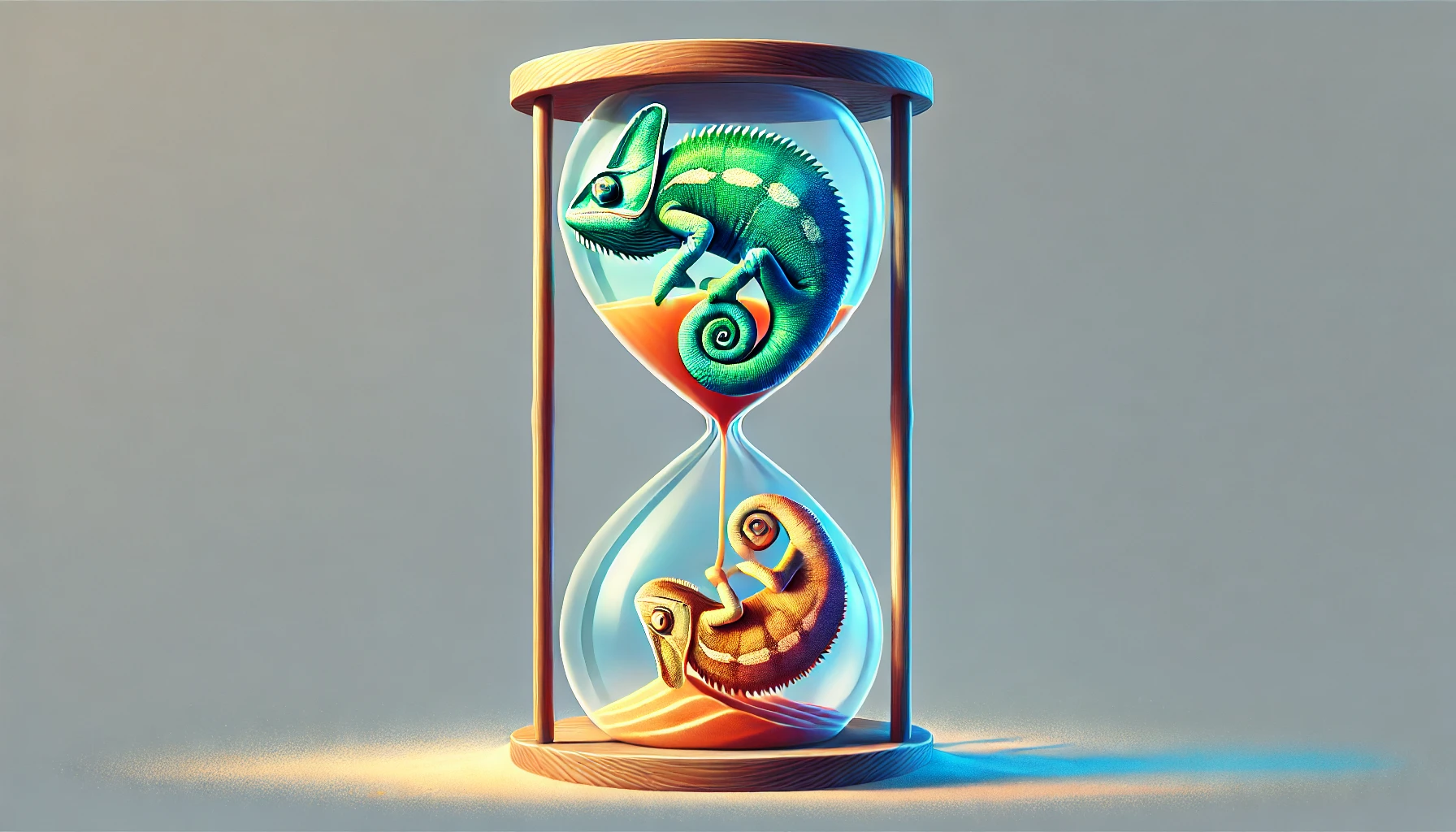
“Time is Change” Zoom-Out

Seeing that without time, nothing can change. And as time passes, everything changes — nothing ever stays the same.
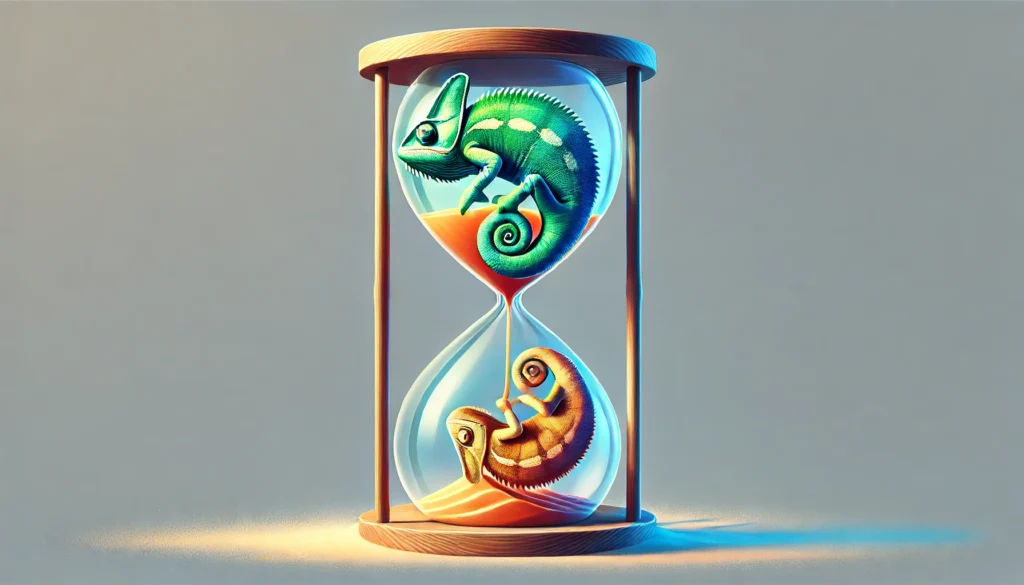
In life and business, we often resist change, wishing our present circumstances and future plans would remain constant.
But what if embracing change could lead to greater resilience and success?
Here’s how:
1) Seeing that change is constant
We all know that time cannot be halted.
And so it is that time and change are inseparable — one drives the other.
Without time, nothing can change. And as time passes, everything changes — nothing ever stays the same.
The Greek philosopher Heraclitus expressed this truth over two thousand years ago:
“No man ever steps in the same river twice, for it’s not the same river, and he’s not the same man.” — Heraclitus (535 BC — 475 BC), Greek philosopher
This idea holds true in our personal lives and professional careers.
Over time, we evolve, as do the situations around us.
If you reflect on who you were 10 years ago, it’s likely that you’ll see how much you’ve changed — physically, mentally, and emotionally. Even on a cellular level, with a few exceptions, the molecules in your body have been replaced.
The world around us is constantly evolving, often beyond our perception. Just like a time-lapse video reveals how glaciers shift or seasons transition, life’s gradual changes can often go unnoticed until we pause to reflect.
However, our minds tend to resist this reality.
We often perceive things as static, a bias called eternalisation.
We cling to the idea that our current situation, health, job, or relationships will remain as they are.
This perception, while comforting, can lead to suffering when things inevitably shift.
Buddhism highlights this concept of impermanence, noting that suffering arises when we resist change:
“‘All conditioned things are impermanent’ — when one sees this with wisdom, one turns away from suffering.”
— The BuddhaSeeing change as constant is the foundation.
But how do we accept change?
2) Embracing change
In the professional world and our personal lives, adaptability is one of the most critical skills.
Understanding that change is constant can help us respond more effectively when market conditions shift, industries evolve, or personal circumstances change.
Instead of resisting or fearing change, we can see it as an opportunity for growth.
Here are a few ways to embrace change and leverage it for personal and professional development:
3) Acknowledge that our perspectives can be deceptive
Our perspectives of ourselves, others and the world are imperfect.
They are based on our own unique life experiences, cognitive biases and a limited set of information.
When we acknowledge this, it helps us to loosen our grip on any belief or mental model that may be anchoring us to how things are now or were in the past.
“All perspectives are wrong, but some are helpful.”
— Zoom-Out Signpost4) Adopt a growth mindset
See change as a chance to learn, adapt, and grow rather than something to fear.
Everything changes, including ourselves, so see each day as an opportunity to change and grow in a direction we prefer.
5) Reflect regularly
Take time to assess how you, others and the world have evolved over the years.
Use this awareness to guide you into the future.
6) Let go of what you can’t control
Recognise when you’re grasping at something that was always destined to change.
It may have changed in a way you did not expect or desire but ask yourself how much control did you ever really have?
By letting go, you can reduce unnecessary stress and focus on making the most of what that change has opened up.
Changing your mind
The art of embracing change is rooted in our mindset.
What other ways have you found help you embrace change in your personal and professional lives?
-

“Intentional Breathing” Zoom-Out

Seeing how intentional, mindful breathing helps us take control of our state and stress response and helps us “see” better.

Something so simple, so taken for granted and literally right under our noses.
Breathing is a superpower when used intentionally and deployed at the most opportune moments.
It’s a foundational skill for taking control of our state and cognitive faculties.
Helping us to more effectively zoom-in and out.
Why?Well, there are a few reasons.
1) More self-control
Taking control of our mind’s eye is a conscious activity engaging our cognitive capabilities.
When we are stressed or tired, we need to give ourselves a boost, to breathe more life into our conscious awareness and cognitive muscles (our brain’s prefrontal cortex).
2) Less stressed and more rational
When we are stressed or anxious our “fight, flight or freeze” response is activated (sympathetic nervous system) which diverts blood and oxygen from our cognitive muscles making it difficult to think clearly.
When we intentionally breathe slowly and deeply this activates our “rest and digest” response (parasympathetic nervous system) which helps us be more rational and see things more objectively.
3) Better attentional control
We can leverage our breathing to direct the spotlight of our attention.
To zoom-out from whatever situation is gripping us, then zoom-in on our breath
Then zoom-out to see a broader perspective or one or more alternative perspectives.
We may then zoom-in on something more helpful.
4) Anxiety to excitement
When combined with some other zoom-outs (see “Catchphrase” Zoom-Out) we can turn situational anxiety into excitement.
“Anxiety is excitement without breath.”
― Fritz Perls, founder of Gestalt TherapyIn general terms, mindful breathing:
- helps to reduce stress and anxiety
- reduces blood pressure
- slows the heart
- improves your immune response
– all of which also have health benefits.
>> IN ACTION <<
Mindful BreathingIn its simplest form, we just take a deep breath in and then exhale slowly.
Paying attention to the sensations of the breath in our body (nose, throat, chest, belly).
Repeat until you feel a sense of ease and perspective.The key here is for the exhale to be longer than the inhale. It’s also advantageous to inhale through your nose and exhale through your mouth.

>> IN ACTION <<
Physiological SighThis is reminiscent of the inhale-on-top-of-an-inhale that can occur after someone has been crying and can be soothing.
- A quick, deep inhale through the nose
- A further short ‘stretch’ inhale through the nose
- Long exhale through the mouth – the “sigh”
- Repeat one to three times

This is calming, soothing and dampens your stress response.
Source >> Stanford Medicine research group: David Spiegel, Andrew Huberman and Melis Yilmaz Balba
>> IN ACTION <<
4-7-8 Breathing.Repeat the following several times. The power in this again comes from the exhale being longer
than the inhale.- Inhale for a count of four
- Hold for seven
- Exhale for eight

>> IN ACTION <<
Box BreathingImagine moving along the sides of a box for a cycle of breath:
- 4 seconds inhale
- 4 seconds hold
- 4 seconds exhale
- 4 seconds hold; repeat

There are many apps to guide you in different patterns of breathing and to help you cultivate a
mindful breathing habit.
-

Acute Stress

Dealing with acute stress in the moment and taking control of our stress response.
Here we are focused on acute stress, those short-lived bursts of potentially high-intensity stress which can feel unpleasant and undermine our performance if not handled with insight and skill.
Typical sources of acute stress include:
- Unexpected events (job loss, breakup, medical emergency)
- High-stakes situations (public speaking, job interviews, exams)
- Conflict and confrontation (arguments, workplace tension)
- Time pressure and deadlines (last-minute tasks, running late, traffic jams)
- Physical danger or threats (accidents, natural disasters)
- Overstimulation (crowded, noisy environments)
- Performance pressure (competitions, auditions, presentations)
- Sudden change or uncertainty (bad news, disrupted plans)
The symptoms of acute stress include:
- Rapid heartbeat
- Shortness of breath
- Sweating
- Muscle tension
- Upset stomach or nausea
- Dizziness or lightheadedness
- Shaking or trembling
- Racing thoughts
- Irritability or agitation
- Difficulty concentrating
- Feeling overwhelmed or panicked
- Nail biting
Q. Are you experiencing acute stress?
The first level of zoom-out is to recognise when we are in a state of acute stress. Acute stress is familiar to us all. The above sources and symptoms of acute stress may help us get a little more clarity.
When we are gripped by a stressful situation, we are in fight, flight or freeze mode. This is evolution’s way of helping us deal with challenging situations even if it means overreacting. Better to be safe and alive than happy and stress-free.
Drafting… Evolution did not design our minds to see clearly …The steps below will help you zoom-out further, to step back from the stressor and your stress response itself and gain more control.
Q. Is your focus unhelpfully narrow?
When we experience stress, our focus tends to narrow.
Again, this has an evolutionary advantage in that it increases our chances of survival and passing on our genes when it really matters. In most cases, this is an overreaction.
We are facing a challenging situation.
But just when a broader perspective could be most helpful, our focus has instead narrowed in a potentially unhelpful way.
For example, we can become fixated on a single course of action which may be hindered. We persist as this is the only course of action we can see in this moment when in fact other options may be available to us when we zoom-out.
So when we experience stress, keep in mind that by zooming-out and applying the actions below, we can not only keep things in perspective but also open our mind to other ways of seeing and dealing with the current situation.
Q. Are you breathing optimally?
When we are stressed or feeling anxious, our breathing diminishes. So just when we may need our maximum internal resources, we are cutting off the oxygen supply!
Some have referred to this dramatically as a “self-lobotomy” as this can severely undercut our mental faculties (pre-frontal cortex).
“Anxiety is excitement without breath.”
― Fritz Perls, founder of Gestalt TherapySo let’s not forget to breathe!
Breathing is usually automatic but in this case we need to take control and breathe intentionally.
Action Belly breathe in through your nose & slowly exhale through your lips.
Feel the sensations.
Repeat a few times.This grounds us in the present.
It helps us step back from the situation.
It increases the flow of oxygen to our mental faculties.
This gives us more control over our minds.
Seeing how intentional, mindful breathing helps us take control of our state and stress response and helps us “see” better …
Q. Are you excited?
When we feel stressed, this is our body’s way of readying us to deal with the situation.
Our physical reactions of anxiety and excitement are extremely similar – raised heart rate, dilated pupils, etc
We can reframe our stress response as excitement for action.
Action Tell yourself “I am excited” We feel more empowered and less of a victim of circumstance.
<o> Arousal
Q. What is causing you stress right now?
Name it.
Be specific.
See also:
Seeing how this will look differently when you look back in the future …Seeing how merely thinking about something will exaggerate its importance …Q. How much of the stress is due to how you are viewing the situation?
…
Let’s explore how Zooming-Out can help us view, think about and act upon stress in the most optimal way ……
…
<o> Cool Off
<o> Stress Bucket
<o> Stress Audit
<o> The Pledge
<o> Second Arrow
<o> Next Positive Action
<o> Wise Distraction
<o> Catchphrase
<o> Blast Radius
<o> Burnout Detector
<o> Inverted U
<o> Stretch Zone
…
Stress related posts:
“Inverted U” Zoom-Out
Seeing the relationship between pressure and performance. The Yerkes-Dodson Law of Arousal and Performance Screenshot …“Adversity Adventure” Zoom-Out
Seeing adversity as a potential adventure. Let’s face it, life can be pretty hard. Everyone experiences adversity in their lives …Lazarus’ transactional model of stress
In 1976 Richard Lazarus developed what was to become a highly influential model of stress …“Evolutionary Distortions” Zoom-Out
Drafting… Evolution did not design our minds to see clearly …“Time is Change” Zoom-Out
Seeing that without time, nothing can change. And as time passes, everything changes — nothing ever stays the same …“Intentional Breathing” Zoom-Out
Seeing how intentional, mindful breathing helps us take control of our state and stress response and helps us “see” better …Acute Stress
Dealing with acute stress in the moment and taking control of our stress response …“Focusing Illusion” Zoom-Out
Seeing how merely thinking about something will exaggerate its importance …Stress and perspective
Let’s explore how Zooming-Out can help us view, think about and act upon stress in the most optimal way …“Wasp Sting” Zoom-Out
Seeing how an insect sting can put everyday stress and suffering into perspective … -

Chronic Stress

Dealing with an ongoing source of stress.
Let’s explore a source of ongoing stress in your life.
Q. What is causing you stress?
Be specific.
Write it down.
Place it out in front of you.
Q. How stressful is it compared with other situations in your life?
On a scale of 1 to 10?Let’s put this into perspective with other stressful situations you have experienced.
Consider other stressful situations you have handled. Especially ones you handled with success and pride.
Reflect on the way you viewed them and dealt with them.
Q. How stressful is it compared with stressful situations in other people’s lives?
Let’s put this into perspective with other stressful situations people experience.
Reflect on the way other people view them and deal with them.
Q. How will this look when you look back in years from now?
We can get so zoomed-in on something that it appears huge in the moment, partly because it is happening now.
It fills our mind’s eye and consumes too much attention.
Q. On a scale of 1 to 10 how stressful is it now?
Given you have now zoomed-out on the stressful situation, how stressful would you rate it now?
How has your score changed from the original at the top of this page?
Q. What are the upsides to the situation?
Q. What benefits can be had here?
Q. What opportunities exist?
-

“Focusing Illusion” Zoom-Out

Seeing how merely thinking about something will exaggerate its importance.
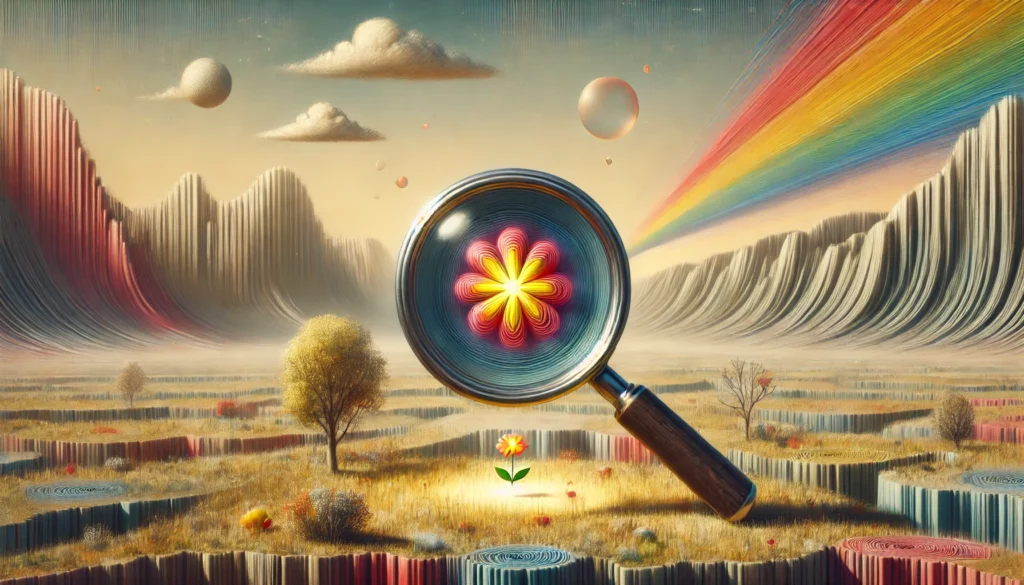
“Nothing in life is quite as important as you think it is while you are thinking about it”
“…merely thinking about it will exaggerate its importance”
– Daniel Kahneman
Consider the following scenarios:
- You are considering moving to a new location which is much sunnier
- Q. How much impact on your happiness to do associate with the sunshine?
- Insight: Studies show that a sunny climate has little impact on overall happiness!
- Someone recommends a book to you
- Q. How much weight do you assign to this book, out of all available books?
- Remembering the focusing illusion can help you stop a knee-jerk purchase and re-shift of your attention!
- You look in the mirror and notice a new wrinkle or other blemish
- Q. How much attention and weight do you give to it?
- Just the act of focusing on it will exaggerate it’s significance. Remembering the focusing illusion can help you regain a broader perspective.
- You are considering moving to a new location which is much sunnier
-

Stress and perspective

Let’s explore how Zooming-Out can help us view, think about and act upon stress in the most optimal way.
What is stress?
We are all familiar with stress, we’ve all experienced it.
Here are a couple of dictionary definitions:
Stress is: “subject to pressure or tension.”
Stress is “to cause mental or emotional strain or tension in.”
At this point, it’s worth making the distinction between physical stress such as heat, physical pressure on our body, etc and psychological stress. In Zoom-Out we are concerned with psychological stress – which is what people usually mean when they refer to the stress of everyday life.
Types of stress
There are generally considered to be three types of stress:
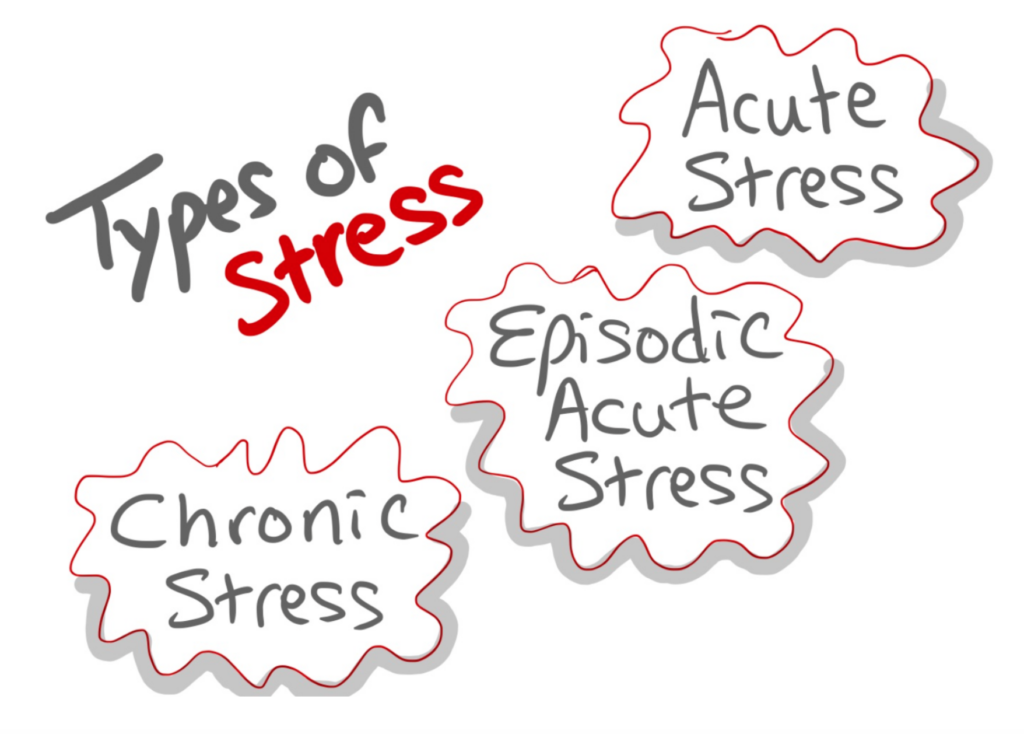
Acute stress is a short-lived, often high intensity reaction to a challenging situation (a stressor). Acute stress being short-lived
Episodic acute stress is where the acute stress is experienced regularly.
Chronic stress is where stress is long-lived and constant. It can be caused by life factors and more constant environmental stressors.
It can lead to a feeling of being overwhelmed and burn-out as a person’s psychological resources become depleted. Chronic stress can lead to illness and may require treatment.
Distress versus Eustress
Distress is the label given to stress that is considered overwhelming (insufficient resources) and damaging and is associated with negative emotions.
Eustress is the label given to stress that feels challenging but manageable (sufficient resources) and is associated with positive emotions and growth.
Which type of stress is as much a reflection of the person and their inner resources than the external stressor. Faced with the same stressor, one person may experience distress while another eustress.
The role of perspective in stress
I think we can all relate to these definitions of stress but from a Zoom-Out stance, there is a vital piece of the jigsaw missing and that is the role that perspectives and human perception play in stress. Here’s a more helpful definition:
Stress is: “The physiological changes in your body due to external factors that are perceived as threatening harm, loss or misfortune, or as demanding more than you have in resources or capabilities.”
– Theresa Fox, DeStressifyThe key zoom-out words here are:
“perceived as threatening”
This is incredibly empowering!
We have an extra variable to play with in the stress equation.
the ability to also change how we are viewing a stressful situation (stressor)
Zoom-Out is about acknowledging and developing this ability.
Stress may be in the eye of the beholder!

This is ancient wisdom.
“There is nothing either good or bad, but thinking makes it so.”
– Shakespeare’s Hamlet
“People are not disturbed by events but by the view they take of them.”
– Epictetus, Stoic philosopher, A.D. 55 – 135
“We suffer more in imagination than in reality”
– Seneca, Stoic philosopher
“We are what we think.
All that we are arises with our thoughts.
With our thoughts, we make the world.”
– The Buddha, 563 – 483 BCLazarus’ transactional model of stress
In 1976 Richard Lazarus developed what was to become a highly influential model of stress. In his transactional model, cognitive appraisal is key to understanding stress.
Cognitive relates to thinking and appraisal means making a judgement when evaluating a potential stressor.
A person perceives a situation and gives meaning to it. Stress arises when a person perceives that a situation places a strain on them which is greater than their resources.

More generally, the Zoom-Out mindset correlates strongly with our cognitive reappraisal skills.
Stress arises when a person perceives that a situation places a strain on them which is greater than their resources.
Our ability to step back from a default perspective and find the most helpful perspective is another way of expressing cognitive reappraisal as expressed by some of the Zoom-Out signposts and motto:
“All Perspectives are wrong but some are helpful”
– Zoom-Out Signpost“Default perspectives can be overridden”
– Zoom-Out Signpost“Zoom-Out to find the most helpful perspective”
– Zoom-Out Motto
You will find that some of the individual Zoom-Outs can help with “coping” with stress in the model as follows:- Some Zoom-Outs are “emotion-focused” and help “change the relation to the situation”
- Some Zoom-Outs are “problem-focused” and help “change the situation itself”
- Some Zoom-Outs are both “emotion-focused” and “problem-focused”
Perspective on stress itself
It turns out that the rabbit hole goes even deeper than just our perspective on events/stressors.
Our perspective on stress itself has a profound effect on the role that stress plays in our lives.
It even has an effect on our physical health and life span.
If we view stress as damaging and something to be avoided, in the long run, stress can make us ill and reduce our life expectancy.
If we view stress as a challenge and something that strengthens us then the opposite can be true.
See also:
Explore what is stressing you out right now and how zoom-out may help.
Explore a source of ongoing stress.
